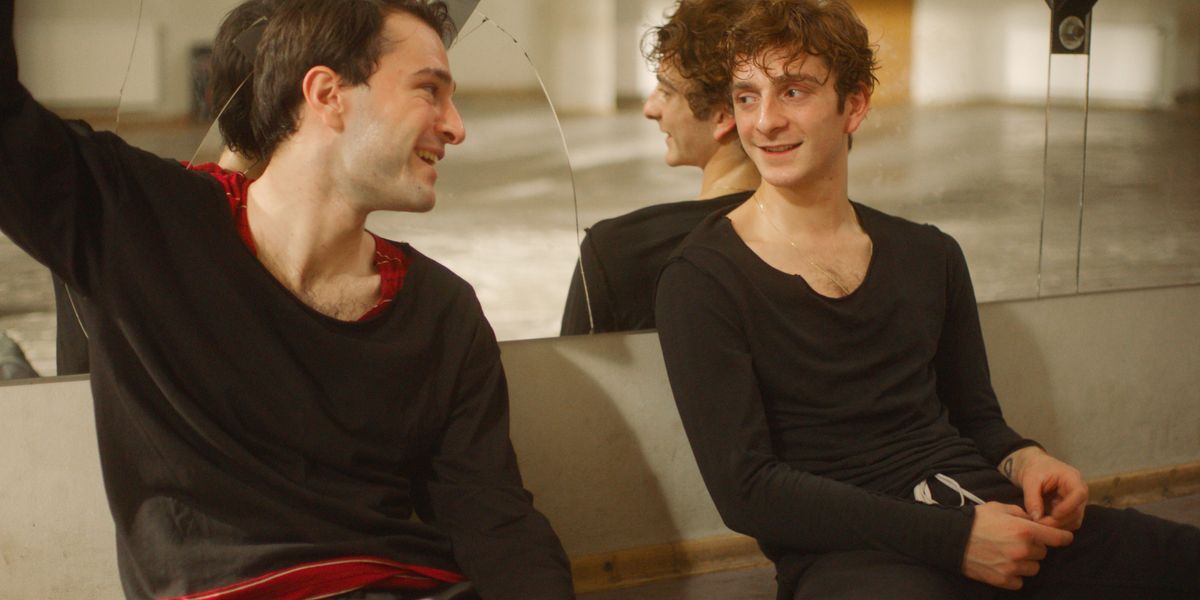Rejected by Its Home Country, This Georgian Dance Film Has Become a Surprise Hit
Director Levan Akin’s new movie may have been rejected by the country where it was filmed, but elsewhere in the world, moviegoers are embracing the film like a traditional Georgian dancer, arms raised and elbows bent in an enthusiastic display of bravado.
And Then We Danced
opens in nine more North American markets this weekend, on the heels of successful openings in New York, Chicago and other cities, and a slew of festival screenings around the globe.
Just not in Georgia, the native country of Akin’s grandparents, where he filmed his low-budget surprise-hit dance film.
The film was dropped from the Tbilisi Film Festival last fall after massive protests at the premiere turned violent. Police in riot gear separated filmgoers from far-right activists and angry Orthodox priests, all because the film depicts a same-sex relationship between two dancers auditioning for Georgia’s national dance company.
Yet the movie earned a standing ovation last year at the Cannes Film Festival. And Sweden, the country that welcomed Akin’s parents as immigrants, submitted And Then We Danced to the Oscars as its entry for Best International Feature.
“I’m so grateful to Sweden,” says Akin. “It means so much that Sweden nominated a film that wasn’t filmed here and was filmed in another language.” The Swedish Film Institute also contributed funding for the film, along with ABBA founder Benny Andersson and Mathilde Dedye, a French producer married to Swedish director who Akin heard loved dance.

Akin had been working in Swedish film and television for about a decade when he saw footage of Tbilisi’s 2013 gay pride parade. The event drew far more protesters then participants, and the brave marchers “were just kids,” Akin says. He wanted to tell a story about growing up in Georgia today, and decided that dance would provide the best lens.
As a kid growing up in Stockholm, Akin knew dance played an outsized role in his ancestral country. (It’s is the homeland of Balanchine, after all, and former American Ballet Theatre principal Nina Ananiashvili now runs the state ballet company.) He loved watching Soviet folk dance competitions on television. “Orson Welles was the narrator, which was crazy. I would always cheer when Georgia came on,” Akin says. As a teenager, he trained with former Martha Graham dancer Maher Benham.

Akin found his star, contemporary dancer Levan Galbakhiani, on Instagram. Like his character Merab, Galbakhiani comes from a poor family and waits tables when he’s not rehearsing or performing. (That’s his restaurant shown in And Then We Danced; it was open for business during filming.) Bachi Valisvili, who plays Merab’s love interest Irakli, is a theater actor who studied traditional Georgian dance as a kid, and brushed up for the film.
It’s somewhat rare to see a dance film that takes folk dance seriously and that examines how economic privilege too often determines who gets to be a dancer. “It’s the case in so many countries, including Georgia and England and the United States. To be able to pursue art, you have to come from a rich background,” Akin says. “It is a privilege to be able to say, ‘I am going to be an actor,’ or ‘I am going to be a dancer.’ ” And although the movie has drawn comparisons to Call Me By Your Name, Akin maintains that this is a coming of age movie, not a “coming out” movie.

Towards the film’s end, as Merab begins to imagine life beyond Tbilisi, he experiments with his own modern/folk fusion that riffs on the traditional, hyper-masculine Georgian dance. Akin was able to credit contemporary choreographer Natia Chikvaidze for her work on those scenes, but not the choreographer who staged the traditional Georgian dances, for fear that person would get fired. (None of the film’s dancers are members of Georgia’s national company.)
As Akin depicts it, Georgia’s national company is run by homophobic tyrants, especially the director of the junior ensemble. “Georgian audiences are saying we could have exaggerated him even more. They really do rage and throw things at the dancers,” Akin says.
In his follow-up film, Akin plans to focus on Zaza, a female dancer mocked in And Then We Danced for being of Armenian descent. It’s not clear yet what role dance will play in the sequel, but the art form will continue to inspire Akin’s work.
“I love Mats Ek and Alexander Ekman,” Akin says. “I’m still friends with many dancers and I try to see everything at Dansen Hus. [The contemporary dance venue in Stockholm.] I love dance.”




